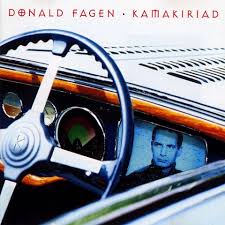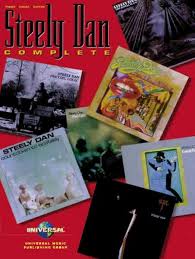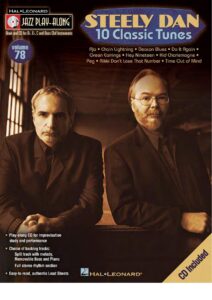Come join us now, and enjoy playing your beloved music and browse through great scores of every level and styles!
Can’t find the songbook you’re looking for? Please, email us at: sheetmusiclibrarypdf@gmail.com We’d like to help you!
Table of Contents
Who is Donald Fagen?

Donald Fagen RECmix
https://youtu.be/-wlA309xBBQ?feature=shared
Best Sheet Music download from our Library.

Please, subscribe to our Library.
If you are already a subscriber, please, check our NEW SCORES’ page every month for new sheet music. THANK YOU!

Browse in the Library:
Or browse in the categories menus & download the Library Catalog PDF:
Donald Fagen: The Architect of Ironic Cool
Donald Fagen stands as one of the most distinctive and enigmatic figures in the landscape of popular music. As the co-founder, lead singer, co-songwriter, and de facto aesthetic director of Steely Dan, and later as a successful solo artist, Fagen has carved out a unique territory where the sophisticated harmonies of bebop jazz collide with the sharp, cynical wit of a postmodern novelist. His work is a universe of flawed characters, seedy urban landscapes, and complex emotional states, all set to music of unparalleled technical precision and harmonic richness. To understand Donald Fagen is to understand a relentless pursuit of a specific, coolly detached artistic ideal.
Biography: From the Suburbs to the Nightclub
Donald Jay Fagen was born on January 10, 1947, in Passaic, New Jersey, and grew up in the nearby suburban town of Fair Lawn. His childhood was a typical post-war American experience, but one that he would later view with a mixture of nostalgia and sardonic distance—a tension that would fuel much of his songwriting. His family was Jewish, and he described the environment as “pretty conservative, pretty sterile.”
The pivotal moment came at age ten when he discovered jazz. He heard a broadcast of the Duke Ellington Orchestra on the radio, and it was a revelation. Soon, he was immersed in the world of bebop—Charlie Parker, Thelonious Monk, Horace Silver, and especially Miles Davis and Sonny Rollins. This music represented an escape from the blandness of suburbia, a world of adult cool, mystery, and intellectual stimulation. He took piano lessons but was largely a self-taught theorist, learning jazz harmony by ear from records.
Fagen enrolled at Bard College in Annandale-on-Hudson, New York, in 1965. It was there, in 1967, that he met Walter Becker, a guitarist and bassist who shared his obsessive love for jazz, blues, and Beat literature. The two quickly formed a songwriting partnership, recognizing in each other a kindred musical spirit and a similarly cynical worldview. As Fagen later quipped, “We both liked the same kind of weird music.”
After college, they made a brief and unsuccessful attempt to break into the music business in New York City, even working as staff songwriters for ABC-Dunhill Records. Their demos were rejected for being “too weird” for the pop market. Disillusioned, they formed a band with other Bard alumni, including drummer Chet McCracken and future comedy star Chevy Chase on drums. The band floundered, but the songwriting duo persevered.
The break came when they connected with guitarist Denny Dias, who shared their interest in complex harmony, and through him, they formed the core of what would become Steely Dan. Relocating to Los Angeles, they assembled a full band, secured a record deal, and in 1972, released Can’t Buy a Thrill. The album was a surprise success, propelled by the hits “Do It Again” and “Reelin’ In the Years.” However, Fagen and Becker were never comfortable with the trappings of a conventional rock band. They disliked touring and the “rock star” persona. After a few albums, they made the radical decision to retire from touring entirely in 1974, transforming Steely Dan into a studio-only entity.
This move allowed them to fully realize their artistic vision. They became legendary perfectionists, hiring and firing dozens of the best session musicians in Los Angeles to get the precise take they wanted. This period produced their most acclaimed albums: Katy Lied (1975), The Royal Scam (1976), and the masterpiece Aja (1977). The relentless pursuit of perfection took its toll, and after 1980’s Gaucho, a project plagued by technical, legal, and personal problems (including Becker’s serious drug addiction and a lawsuit by former songwriter Keith Jarrett), the duo disbanded.
Fagen embarked on a solo career, releasing the critically adored The Nightfly in 1982. The album was a concept record about the late 1950s and early 1960s, viewed through the lens of a young, romantic hipster DJ—a stark contrast to the cynical narratives of later Steely Dan. It was a commercial and critical success, proving Fagen could thrive without Becker.

The 1980s and early 90s were a fallow period creatively, marked by writer’s block and personal struggles, documented in his witty and revealing 1993 memoir, Eminent Hipsters. He released his second solo album, Kamakiriad, in 1993, produced by a now-sober Walter Becker. This collaboration reignited their partnership, leading to a full-fledged Steely Dan reunion in the late 1990s. They toured extensively to great acclaim and released two new albums of original material: Two Against Nature (2000), which surprisingly won the Grammy Award for Album of the Year, and Everything Must Go (2003).
Fagen continued to tour with Steely Dan until Becker’s untimely death in 2017. The loss was profound, but Fagen has continued to perform the duo’s repertoire, honoring their legacy. He released his fourth solo album, Sunken Condos, in 2012, and remains an active, if selective, musical force.
Music Style and Harmony: The Blueprint of a Sound
Donald Fagen’s musical style is a sophisticated fusion, but its foundation is unshakably jazz.
Chord Progressions and Harmony:
This is the core of the Fagen/Becker sound. They moved far beyond the simple triads and blues-based progressions of most rock music.
- Extended Chords: Their songs are built on chords with 7ths, 9ths, 11ths, and 13ths. A simple C major chord becomes Cmaj7, Cmaj9, or even more complex voicings. This creates a rich, ambiguous, and adult texture.
- Chord Substitution and Reharmonization: They were masters of replacing a standard chord with a more interesting one. A classic example is in “Peg,” where the chorus progression is a sophisticated cycle of dominant chords with altered extensions, creating a sense of effortless, flowing motion.
- Modal Interchange: They frequently borrowed chords from the parallel minor or other modes. For instance, inserting a chord from the C minor scale into a song in C major. This technique, a staple of jazz, adds color and surprise. The bridge of “Deacon Blues” is a masterclass in this, moving through unexpected, melancholic territories.
- Voice Leading: The individual notes within the chords (the “voices”) move in smooth, logical, and often beautiful stepwise motion. This is a principle borrowed directly from Bach and other classical composers, and it gives their complex harmonies a sense of inevitability and elegance.
Improvisational Licks and Melody:
While Fagen is not primarily known as a virtuoso improviser on the piano in a live context (his role is more compositional and textural), his musical language is deeply improvisational.
- Bebop Vocabulary: The melodies and solos in Steely Dan’s music, whether played by Fagen on a synth solo or by a hired gun like saxophonist Wayne Shorter, are steeped in the language of bebop. This includes the use of chromaticism (moving by half-steps), enclosures (approaching a target note from above and below), and rhythmic displacement (playing phrases that start on off-beats).
- Fagen’s Piano Style: His own playing is economical and harmonically dense. He comps (accompanies) with rich, close-voiced chords, often in the middle register of the keyboard. His solos, as heard on tracks like “Home at Last” or “The Nightfly,” are less about blistering speed and more about melodic development and harmonic sophistication, reflecting the influence of pianists like Bill Evans and Wynton Kelly.
Cooperation with Other Artists: The Session Elite
Steely Dan’s studio-era methodology was built on collaboration with the best musicians available. They were famously demanding, but the results speak for themselves. Key collaborators include:
- Guitarists: Jeff “Skunk” Baxter (early member), Denny Dias (early member and chordal genius), Larry Carlton (whose solos on “Kid Charlemagne” and “Don’t Take Me Alive” are legendary), Jay Graydon (who delivered the impossibly perfect solo on “Peg” after multiple others failed), and Walter Becker himself, a highly underrated and quirky rhythm guitarist.
- Drummers: Jim Hodder (early member), Jim Keltner, Bernard “Pretty” Purdie (whose famous “Purdie Shuffle” defines “Home at Last” and “Babylon Sisters”), and Steve Gadd (whose solo on Aja‘s title track is a landmark in drumming history).
- Saxophonists: Phil Woods (whose alto sax solo on “Doctor Wu” is pure poetry), Wayne Shorter (whose soprano sax solo on the title track “Aja” is a masterwork of lyrical abstraction), and Pete Christlieb (a powerful tenor player).
- Producers/Engineers: Gary Katz was their essential third partner, serving as producer and providing a crucial buffer between the duo and the record label. Engineer Roger Nichols was their technical wizard, developing revolutionary techniques to achieve their pristine sound.
Fagen’s solo work continued this tradition, featuring luminaries like guitarist Hugh McCracken, drummer Steve Jordan, and saxophonist Chris Potter.
Influences: The Roots of the Sound
Fagen’s influences are the blueprint for his entire aesthetic:
- Jazz: The primary influence. From the swing of Duke Ellington and Count Basie to the bebop of Charlie Parker and Bud Powell, and the modal and post-bop innovations of Miles Davis (especially the albums Kind of Blue and Bitches Brew) and John Coltrane.
- Rhythm and Blues/Soul: The music of Ray Charles, James Brown, and Motown informed the tight, groove-oriented rhythm sections of Steely Dan.
- The Great American Songbook: The craft of songwriters like Cole Porter, George Gershwin, and Irving Berlin taught Fagen and Becker about sophisticated melody and lyrical wit.
- Literature: The cynical, alienated protagonists of Fagen’s songs owe a debt to Beat writers like Jack Kerouac and William S. Burroughs, as well as to noir fiction and the social satires of Evelyn Waugh.
Legacy: The Perfectionists’ Enduring Influence
Steely Dan and Donald Fagen were an anomaly in the 1970s rock scene. While their peers embraced raw, visceral energy and “authenticity,” Fagen and Becker championed studio craft, intellectual detachment, and musical complexity. Their legacy is multifaceted:
- Musician’s Music: They are revered by musicians for their technical mastery and harmonic sophistication. They proved that “pop” music could be as complex as jazz without losing its appeal.
- The Sound of Studio Perfection: They set a new standard for audio production. Their albums are benchmarks of clarity, depth, and balance, studied by aspiring producers and engineers to this day.
- Ironic Distance: They pioneered a tone of cool, intellectual irony that influenced countless artists, from later sophisti-pop bands like Prefab Sprout to indie acts like The New Pornographers and even hip-hop artists like Kanye West, who sampled their work.
- Enduring Appeal: Their music has never gone out of style. It continues to attract new generations of listeners who discover its timeless melodies, witty lyrics, and endlessly fascinating harmonic depths.
Works: A Selective Deep Dive
Steely Dan Discography:
- Can’t Buy a Thrill (1972)
- Countdown to Ecstasy (1973)
- Pretzel Logic (1974)
- Katy Lied (1975)
- The Royal Scam (1976)
- Aja (1977) – The pinnacle of their studio craft.
- Gaucho (1980)
- Two Against Nature (2000)
- Everything Must Go (2003)
Donald Fagen Solo Discography:
- The Nightfly (1982) – A flawless solo debut, a nostalgic yet clear-eyed masterpiece.
- Kamakiriad (1993)
- Morph the Cat (2006) – The third in an unofficial “trilogy” about death and the afterlife.
- Sunken Condos (2012)
Most Known Compositions and Performances:
- “Reelin’ In the Years”: The song that put them on the map, featuring fiery guitar interplay.
- “Rikki Don’t Lose That Number”: Their biggest hit, based on a vamp from Horace Silver’s “Song for My Father.”
- “Deacon Blues”: The ultimate anthem of suburban jazz fantasy, with a majestic, heart-wrenching arrangement.
- “Peg”: A perfect fusion of pop funk and jazz harmony, featuring an unforgettable guitar solo.
- “Aja”: The title track, an epic, multi-sectioned jazz-rock tour de force.
- “Babylon Sisters”: The smooth, slinky opener from Gaucho, embodying West Coast decadence.
- “IGY (What a Beautiful World)”: The lead single from The Nightfly, an optimistic synth-pop gem with characteristically dark undertones.
- “Green Flower Street”: From The Nightfly, a brilliant evocation of hard bop in a pop song format.
Filmography
Donald Fagen’s involvement in film is limited but notable. He has never scored a film, but his music has been featured prominently in soundtracks, such as FM (“FM (No Static at All)”), The Big Lebowski (“The Stranger” by Chris Isaak, which Fagen co-wrote), and Me, Myself & Irene (“Do It Again”).
He has made occasional cameo appearances, often as himself or a musician, in films like The History of Rock ‘n’ Roll (1995) and the documentary Make It Funky! (2005). The most significant cinematic document is the concert film Steely Dan: The Making of Aja (1999), which offers a rare glimpse into their creative process.
Donald Fagen is a true original. He is a songwriter who elevated pop lyricism with literary ambition, a harmonist who brought the complexities of jazz to a mass audience, and a perfectionist whose work continues to inspire awe. In a world of fleeting trends, the music of Donald Fagen endures because it is built on a foundation of timeless craft, intellectual depth, and a singular, unwavering vision. He is, as his memoir title suggests, an “Eminent Hipster,” the cool, discerning voice from the corner of the nightclub, forever pointing us toward a more interesting and sophisticated sound.
Browse in the Library:
Or browse in the categories menus & download the Library Catalog PDF:
